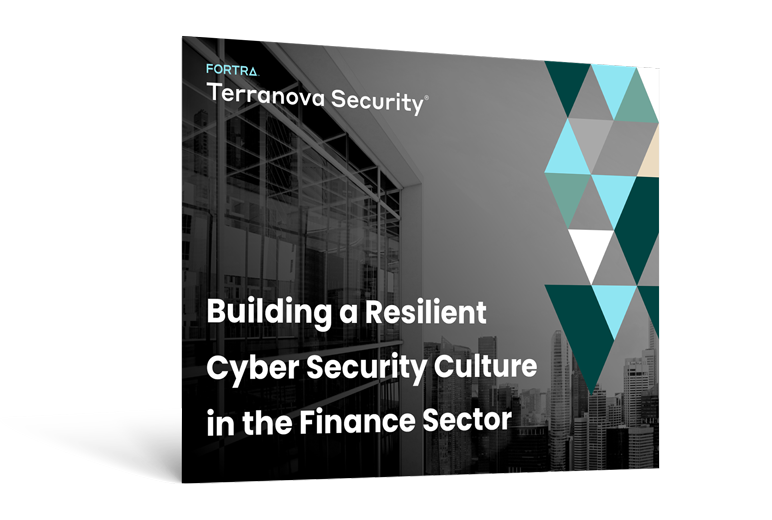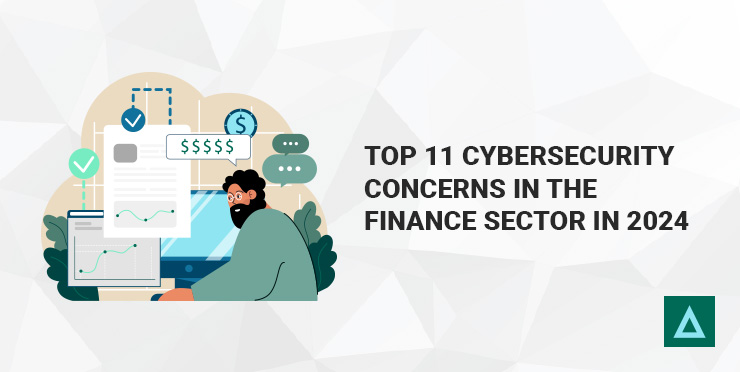Cybersecurity in finance is not just about defense but proactive adaptation. Banks face continuous threats despite advanced security infrastructures. The escalation in phishing success rates, as seen in Terranova Security's 2023 Gone Phishing Tournament found a 10.4% click-through statistic, highlighting the need for evolving security strategies.
While the finance sector performed better than other sectors, there’s always room for improvement to reduce potential clicks to phishing messages, especially considering the sensitivity of information these organizations handle.
In addition, financial institutions often work with one or more of the other sectors on the list to provide and receive goods and services. The weakness in these sectors can enable business email compromise (BEC) attacks and affect any organization interacting with them.
This article outlines the 11 critical cybersecurity challenges specific to the financial sector, providing actionable insights for security teams to enhance their defense mechanisms effectively.
1. Social Engineering
The goal of this threat is to convincingly impersonate a co-worker, supervisor, or business associate, gaining the victim's trust to request private company data or transfer funds.
In fast-paced environments like financial institutions, where sensitive information and large wire transfers are routine, a lack of attention can create the perfect setting for these scams.
Emerging threats are increasingly complex, involving not just technological sophistication but also severe human rights violations, such as cyber fraud powered by human trafficking.
Interpol reports a rise in cyber fraud powered by human trafficking, where victims, deceived by fake job advertisements, are coerced into becoming online scammers to execute online bank frauds.
2. AI-Enabled Phishing
Phishing has become much easier to scale with the introduction of readily available AI.
From personalization to automation, AI makes phishing a hands-off process running in the background, where hackers only have to interact with the victims after being hooked.
AI also allows scammers worldwide to create believable text matching any region's tone, expressions, and idioms.
With this level of sophistication, cybersecurity awareness training becomes crucial. Today’s phishing attacks are not easily identified by spelling errors or awkward syntax. Training your users on what to look for in different types of communication allows them to detect subtler signs of deception.
3. Advanced Persistent Threats (APTs)
Advanced Persistent Threats are sophisticated, ongoing attacks, where the attackers infiltrate an organization’s IT network or systems to steal data or monitor activities. The goal of this attack is to remain undetected until the objectives are achieved.
These persistent threats can lead to corporate espionage, disruption, substantial data breaches, and financial loss due to their ability to evade detection for extended periods.
4. Ransomware
The world runs on money, meaning financial institutions cannot allow any downtime in their operations. This aspect made hackers realize that banks are much more likely to pay ransoms to unlock their systems when attacked by malware.
More than that, banks are also trust-based businesses, meaning any blemish to their reputation can severely damage their operations or affect their market value.
This type of malware can also be challenging to get rid of once allowed to spread on a network, often costing far more than just the price of the ransom.
5. Regulatory Compliance
Cybersecurity has become a hot topic recently, notably with the recent cybersecurity measures put in place by the SEC. The new rules now require financial institutions to disclose any cyber-attack. Organizations in this sector must publish and detail their yearly cybersecurity plan publicly.
Non-compliance can result in severe penalties and legal action. Keeping up with constantly evolving regulations requires significant resources and vigilance, adding complexity to cybersecurity efforts.
These new compliance rules have put renewed focus on cybersecurity in finance and led several institutions to revamp their defenses.
6. DDoS attacks
The financial services sector experienced a sharp increase in DDoS attacks in 2023, becoming the most-targeted industry. These attacks are driven by cyber hacktivist groups or foreign states and enhanced by more powerful botnets, often influenced by rising geopolitical tensions.
While the motive behind these assaults varies, the common goal is to disrupt operations and propagate specific agendas, such as causing chaos and spreading a message.
7. Supply chain attacks
Financial institutions are especially vulnerable to supply chain attacks because almost every business worldwide has some software connection to its bank. In 2013, Target experienced a devastating supply chain attack.
While technically a retail attack, it reached the financial world when hackers stole over 40 million credit and debit account information to resell them online.
This attack was enabled by a small Pennsylvania HVAC subcontractor who didn’t have the correct cybersecurity measures in place. Their network connection with Target allowed hackers to breach the major retailer’s systems.
Financial institutions rely heavily on a vast network of third-party services. A breach in any part of the supply chain can compromise the security of the entire organization, making it essential to have stringent vendor management and security practices in place.
8. Insider Threats
Companies in the financial sector have complex information transfer rules and high employee counts, which results in many potential weak links if an employee is careless or downright malicious.
While preventing a disgruntled employee from stealing credentials is more challenging, cybersecurity awareness training is a great way to combat carelessness in data protection at work. Financial institutions must also implement robust monitoring and access controls to mitigate this risk.
9. Remote/Hybrid Workforce
The remote and hybrid workforce has become a prominent feature of the modern work environment, especially in the financial sector.
This presents numerous cybersecurity challenges for financial institutions. Mobile devices, home networks, and home office environments introduce vulnerabilities that can be exploited by cyber attackers.
Comprehensive security measures are crucial for financial institutions to mitigate risks. Robust device management, secure remote access, employee cybersecurity training, and stringent data protection policies help prevent unauthorized access, reduce human error, and protect sensitive information.
10. Cybersecurity Knowledge Gap
The cybersecurity knowledge gap among employees is a significant risk for financial institutions, stemming from factors such as motivation, behaviors, technology use, and generational differences.
Addressing this risk requires motivating employees to keep cybersecurity in mind, fostering safe behaviors, ensuring effective technology use, and bridging generational differences, such as providing tailored training programs that cater to the varying technological proficiencies and learning styles of different age groups.
Investing in engaging cybersecurity training and fostering a shared responsibility environment is essential for financial institutions to protect against evolving threats.
11. Data Breaches
Data breaches in the financial sector often result from phishing, password theft, brute force attacks, accidental loss, or system vulnerabilities. The sophistication of these attacks escalates with the criticality of the data protected.
Given the financial industry's pivotal role in the economy and the high value of its assets, it has become a prime target for cybercriminals and organized crime networks. Such breaches pose substantial challenges to financial institutions and their regulatory bodies.
Fortifying Cybersecurity Awareness in the Finance Sector
The financial sector's valuable data and access to substantial amounts of funds will continue to attract cybercriminals. To combat this, banks must enhance security measures and invest significantly in employee training.
Rapidly evolving cyber threats and stringent regulatory demands require that staff be aware of and adept at implementing essential security protocols.
Explore deeper insights and practical strategies in our comprehensive eBook on cybersecurity in the finance sector. Download it here.

